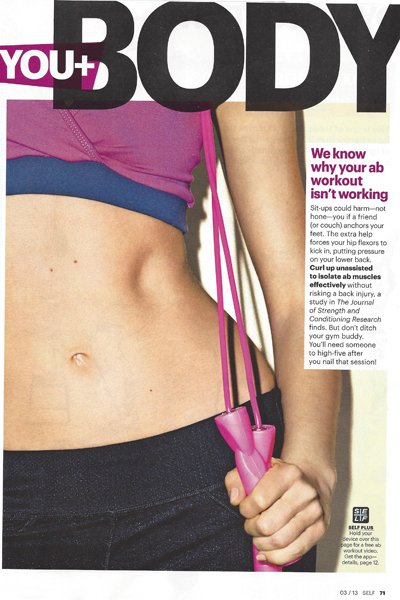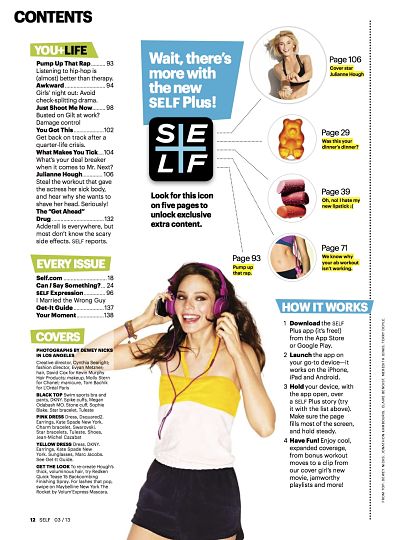February 19, 2013
Condé Nast’s Self is putting mobile, social and Web on the core of a chief redesign meant to connect to digitally-savvy millennial readers.
Self has rolled out a mobile application that uses image recognition to bring static pages of the magazine to life. Additionally, the way of living magazine has revamped its mobile and Site.
“The bigger redesign is set growing the magazine beyond the present audience and wrapping our arms around Generation X and Y,” said Lucy Danziger, editor-in-chief of Self magazine, Big apple.

“What is fun for editors is that there’s not a separation of platforms – as we get a hold of new ideas for the opener page we’re also talking about what the digital content could be,” she said.
“What we actually like to do is create content which will usher in consumers across different platforms.”
Mobile lifestyle
The Self+ app is rolling out with the March redesigned issue and is obtainable without cost download in Apple’s App Store and Google Play.
The app works along with the magazine’s new You+ sections, which include beauty and fashion, health and lifestyle content.
On the opener page of every section, a broadcast icon indicates that the thing is mobile-enabled.
Users can then open the app and hover the device over the page to unlock additional content.
For example, an editorial at the health benefits of paying attention to music is associated with a Spotify playlist with workout songs picked by Self.
Additionally, the canopy story article about Julianne Hough might be scanned with the app to observe an exclusive clip from the actress’ upcoming film, “Safe Haven.”

A beauty story with the best way to apply lipstick lets users shop five different products via the app.
“It creates a relationship between dynamic digital content that we have got always had with the print magazine,” Ms. Danziger said.
“Our readers are extremely tied to their mobile devices,” she said.
Self is promoting the app with a choice-to-action at the front-of-book page alongside the table of contents.
A blurb encourages users to download the app and includes step-by-step directions on how one can use their mobile devices at the side of the difficulty.

Although many publishers are bullish on marrying mobile and print pages, consumer education behind the technology remains to be an issue.
In this situation, Self is sensible to dedicate a page that describes what the app does and where readers can download it.
Double-down on digital
Self has also redesigned its mobile, tablet and Internet sites.
Self.com had 6.9 million unique visitors in January, that’s a 50 percent uptick from December 2012.
Social also plays an enormous role within the site revamp, especially Pinterest.
Ms. Danziger said that approximately one-fifth of Self.com’s traffic comes from Pinterest.
“What is fun for the Self user is that she is using Pinterest to inspire healthy choices and appears,” Ms. Danziger said.
“It is fascinating since it says that we’re serving up the type of content that folks desire to save,” she said.
“The whole point is initially the reader, evolve the method and get her to share that have with other readers.”
Final Take
Lauren Johnson is associate reporter on Mobile Marketer, New York
